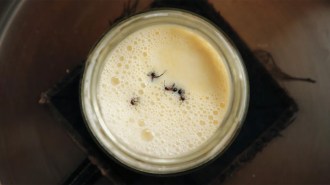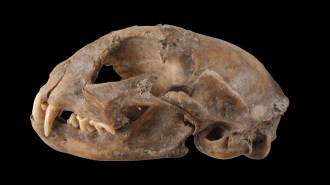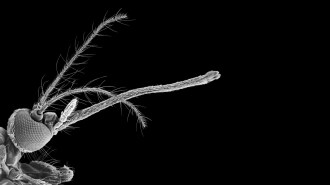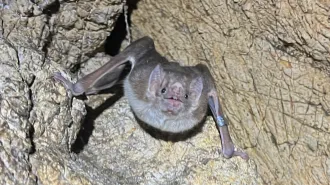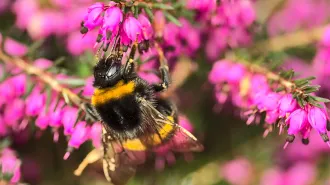Subway mosquitoes evolved millennia ago in ancient Mediterranean cities
Researchers had once thought the mosquito evolved in the London Underground
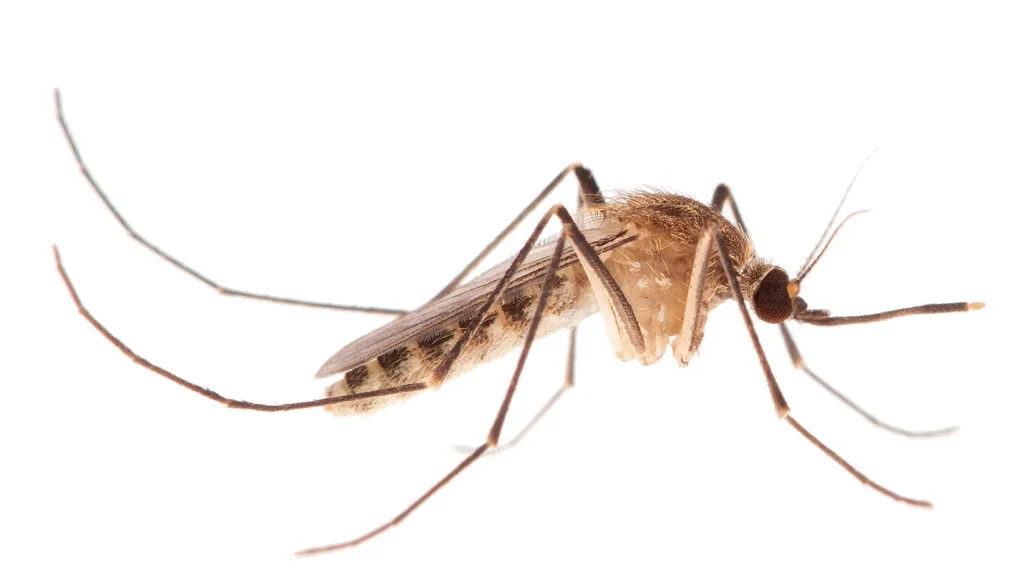
A type of subway-dwelling northern house mosquito (one shown) was thought to originate in the London Underground. Its actual origins are much more ancient.
Lawrence Reeves/University of Florida
Subterranean mosquitoes specialized for life in subways and sewers first evolved to pester humans millennia ago in Mediterranean civilizations.
A widely accepted story about the mosquitoes’ evolution put their origins in the London Underground train system in the last century or two. But the mosquitoes have actually been adapting to humanity’s cities for potentially thousands of years, researchers report in the Oct. 23 Science.
The northern house mosquito (Culex pipiens) typically bites birds. But one form found in urban underground areas across northern latitudes — C. pipiens f. molestus — has evolved to feed on humans and other mammals. It has key adaptations for living in secluded environments with scarce hosts. The molestus mosquitoes can breed in cramped indoor spaces, and when resources are thin, females can produce eggs without taking a blood meal.
The mosquitoes were first recognized during World War II as they bit Londoners in the Underground seeking refuge from Nazi bombing. The chief hypothesis was that molestus evolved right there in the Tube. But decades-older historical records of molestus-like mosquitoes in the Mediterranean suggested otherwise, says Yuki Haba, an evolutionary biologist now at Columbia University.
To explore the mosquito’s evolutionary history, Haba — then at Princeton University — worked with an international team of over 200 scientists. The team compiled, analyzed and compared the genomes — the full set of genetic instructions — of 357 house mosquitoes from 77 locations across western Eurasia.
The molestus lineage far predates the modern cities of Europe, the researchers found, diverging from their bird-biting cousins between 1,300 and 12,500 years ago in the Mediterranean and Middle East. The mosquitoes may have exploited the irrigation and stored water of early agricultural societies for year-round breeding sites. Adaptation to these settlements may have let the insects springboard into modern urban environments later on. Bedbugs took a similar route to become urban pests.
“Adaptation to human spaces didn’t need to start with subways or skyscrapers,” Haba says. “Modern cities didn’t create molestus — they simply offered new spaces where its ancient, human-associated traits could thrive.”
The mosquitoes’ story has been a textbook example of new species arising in response to recent urbanization, says Kristin Winchell, an urban evolutionary ecologist at New York University who was not involved with this research.
“We all just kind of took that as fact, and I think most of us didn’t realize that it didn’t actually have any empirical data backing it up,” she says. “So it’s pretty cool that [the researchers] actually set out to test it.”
Lindsay Miles, an urban evolutionary biologist at Virginia Tech in Blacksburg, is curious whether molestus is interbreeding with aboveground mosquitos around the subway zones where the trains briefly move to aboveground areas. Such hybrids between bird- and human-biting forms facilitate the spread of dangerous pathogens such as West Nile virus, which hops from birds to humans via the bite of C. pipiens, Haba says.
Future work may reveal how the mosquitoes are still evolving, says study coauthor Lindy McBride, an evolutionary biologist at Princeton University. “Even though they didn’t originate in cellars and subways, they are there now and are most likely in the process of adapting further to this unique environment.”
